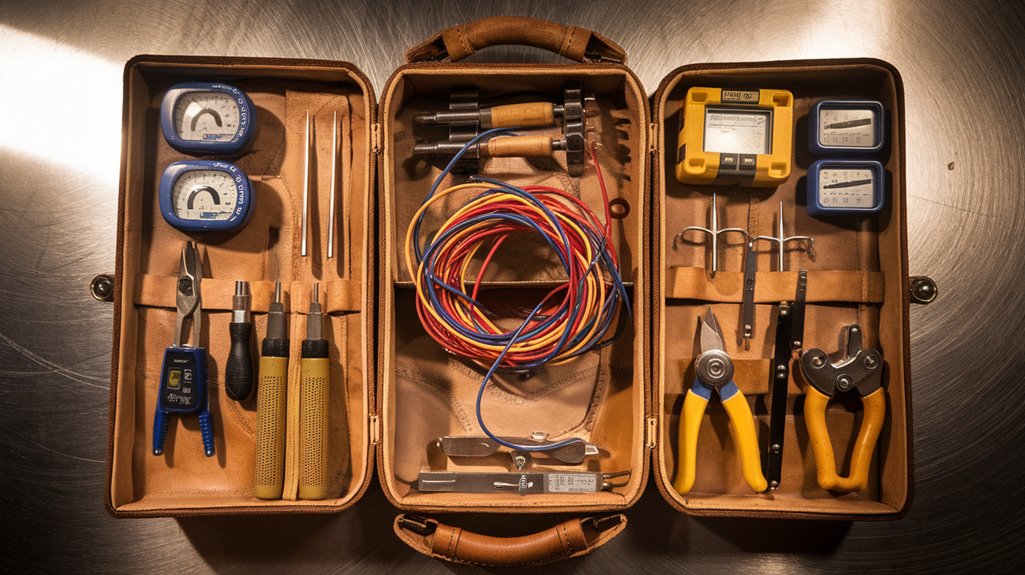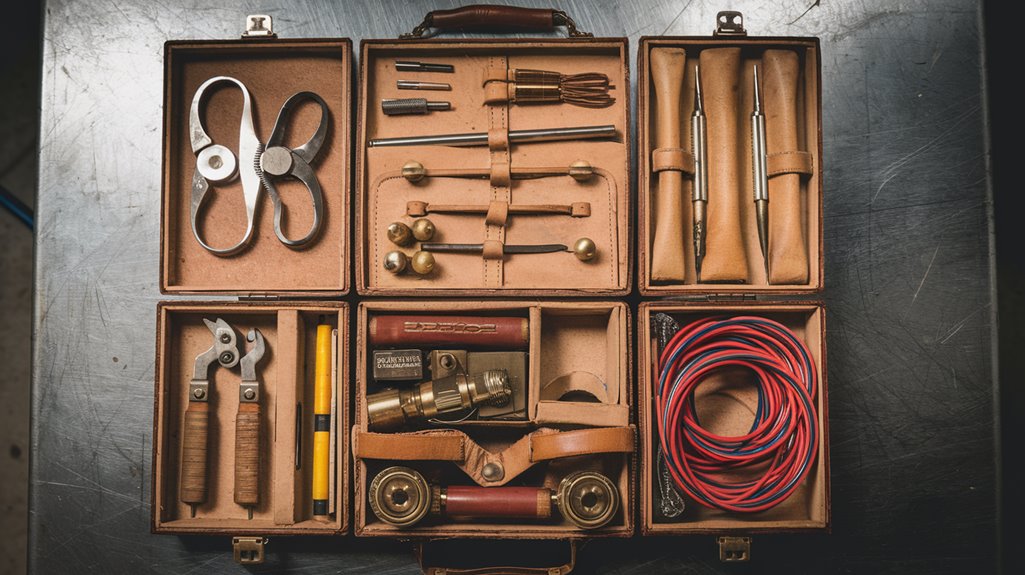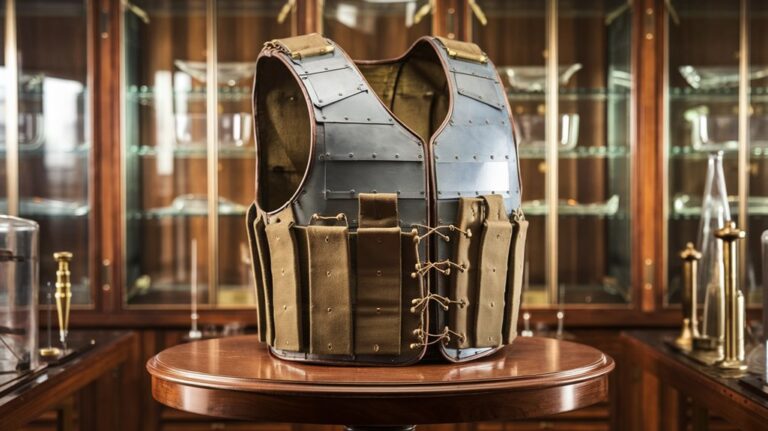Cut the Red Wire? The Bomb-Defusal Myth That Won’t Die
You've seen it countless times in movies: the sweating hero faces a ticking bomb and must choose between the red or blue wire. But this dramatic Hollywood moment couldn't be further from reality. Today's bomb disposal experts rely on sophisticated technology and methodical protocols that make wire-cutting scenes look absurdly simplistic. Yet this persistent myth hasn't just shaped public perception—it's influenced how people think about real bomb threats, sometimes with dangerous consequences. Let's examine the truth behind this explosive misconception.
The Birth of Hollywood's Favorite Bomb Squad Trope
While the roots of Hollywood's bomb-defusal trope can be traced to early 20th-century cinema, it didn't fully explode into popular culture until the Cold War era.
You'll find that early filmmakers recognized the dramatic potential of a ticking timebomb, using it as a convenient plot device to create cinematic tension.
The trope gained significant momentum with the 1974 film "Juggernaut," which introduced the now-famous "cut the red wire" scenario.
This dramatic device would go on to influence countless films, from "Speed" to "Die Hard," despite its departure from real-world bomb disposal techniques.
Like featured article nominations, these film depictions required extensive review and feedback from industry experts to ensure some degree of authenticity, though creative liberties were still common.
While actual bomb disposal requires careful analysis and strict safety protocols, Hollywood opted for a more sensationalized approach, sacrificing accuracy for dramatic effect.
Writers often faced pressure to create authenticity in characters while maintaining the dramatic tension of these scenes.
This choice forever shaped how you'd come to view bomb disposal in popular media.
Real-Life Methods: How Bomb Technicians Actually Work
Unlike Hollywood's dramatic wire-cutting scenes, real bomb disposal relies on sophisticated technology and careful methodology.
You'll find bomb technicians using remote-controlled vehicles equipped with cameras and sensors for initial remote assessment, keeping personnel at a safe distance. They'll employ portable X-ray systems for explosive evaluation, revealing the device's internal structure before taking action. Modern detection faces challenges with battery-based explosives that can be concealed within everyday gadgets.
When it's time to neutralize a threat, you won't see technicians dramatically snipping wires. Instead, they'll deploy tools like projected water disruptors or the Pigstick to safely disable devices from afar.
They'll store and transport explosives in specialized containment vessels, following strict safety protocols. Modern techniques evolved significantly after Sir Vivian Majendie pioneered remote handling methods in the 1870s. Through continuous training and multi-agency collaboration, these professionals stay current with evolving threats and technological advancements, adapting their methods to address increasingly complex challenges.
The Science Behind Modern Bomb Disposal
Modern bomb disposal combines physics, chemistry, and engineering to maximize safety and effectiveness.
Building on training methods established at the Bomb Disposal School, today's professionals undergo rigorous education in advanced detection and neutralization techniques. You'll find that today's EOD technicians rely heavily on robotic assistance and sensor technology to assess and neutralize threats from a safe distance. Through advanced diagnostic tools like portable X-ray systems and remote-controlled vehicles, they can gather critical data about a device's internal structure before taking action. The comprehensive training includes explosive substances handling to ensure technicians understand the chemical properties of materials they encounter.
- Remote-operated water disruptors use precise physics to safely sever detonation circuits
- Advanced sensors detect chemical signatures and radioactive materials
- Specialized containment chambers leverage engineering principles to control blast effects
When you understand the science, you'll see why cutting wires isn't really how it works. Instead, EOD teams employ sophisticated tools and carefully calculated procedures, always prioritizing remote operations over direct handling whenever possible.
Notable Heroes Who Changed Bomb Disposal Forever
Throughout the history of bomb disposal, brave individuals have made extraordinary sacrifices that revolutionized the field.
Bennett Southwell's heroism led to essential advancements despite his tragic death, while John Babington's bravery in tackling a German mine provided critical intelligence about new devices.
You'll find Robert Davies' legacy in his daring protection of St Paul's Cathedral, and Brandon Moss' resilience saved three lives in treacherous conditions.
Arthur Merriman's ingenuity with a 550-lb bomb demonstrated how scientific knowledge could enhance safety protocols. The brave experts at HMS Vernon naval school trained countless officers who would later risk their lives defusing German mines and bombs.
Perhaps most poignant was the Holy Trinity's sacrifice – Earl Jack Howard, Beryl, and Fred – who defused 34 bombs before losing their lives on their 35th attempt. Jack Howard's earlier heroics included a top secret mission to rescue French scientists and transport valuable materials from Paris in 1940.
As civilian heroes, they remain the only non-military casualties in British bomb disposal history.
Why Wire-Cutting Remains a Last Resort

While heroic bomb disposal experts have saved countless lives through their bravery, many of their methods have evolved beyond the dramatic wire-cutting scenes you've seen in movies.
Wire risks are simply too high – a single cut can trigger explosions, complete circuits, or activate delayed action devices. Just as real-time data interpretation is crucial for making timely decisions, bomb disposal teams must analyze threats quickly and accurately.
Modern bomb disposal teams know that cutting techniques are unreliable and dangerous, especially with today's sophisticated anti-tamper mechanisms. You might be surprised to learn that wire-cutting is often their last resort, not their go-to solution. Much like how senior researchers blog to foster constructive discussions about critical issues, bomb disposal teams actively share knowledge to improve safety protocols.
- Remote robots now handle many disposal operations more safely
- Advanced X-ray technology helps teams analyze bomb structures without physical contact
- Specialized tools and alternative disarming methods reduce the need for direct wire manipulation
The reality is that bomb disposal has become increasingly sophisticated, prioritizing methods that keep disposal experts at a safer distance.
The Evolution of Safety Protocols in Explosive Ordnance Disposal
Since Sir Vivian Dering Majendie established the first professional bomb squad in the late 19th century, safety protocols in explosive ordnance disposal have undergone dramatic transformations.
You'll find that today's protocol advancements emphasize remote operations whenever possible, using sophisticated robots and high-performance sensors to keep technicians at a safe distance. The Royal Logistic Corps demonstrated exceptional skill in handling complex explosive threats during conflicts in Northern Ireland.
When hands-on work is necessary, you're protected by specialized blast suits designed to withstand explosions and shrapnel. EOD professionals must maintain detailed task logs documenting each disposal operation they conduct.











